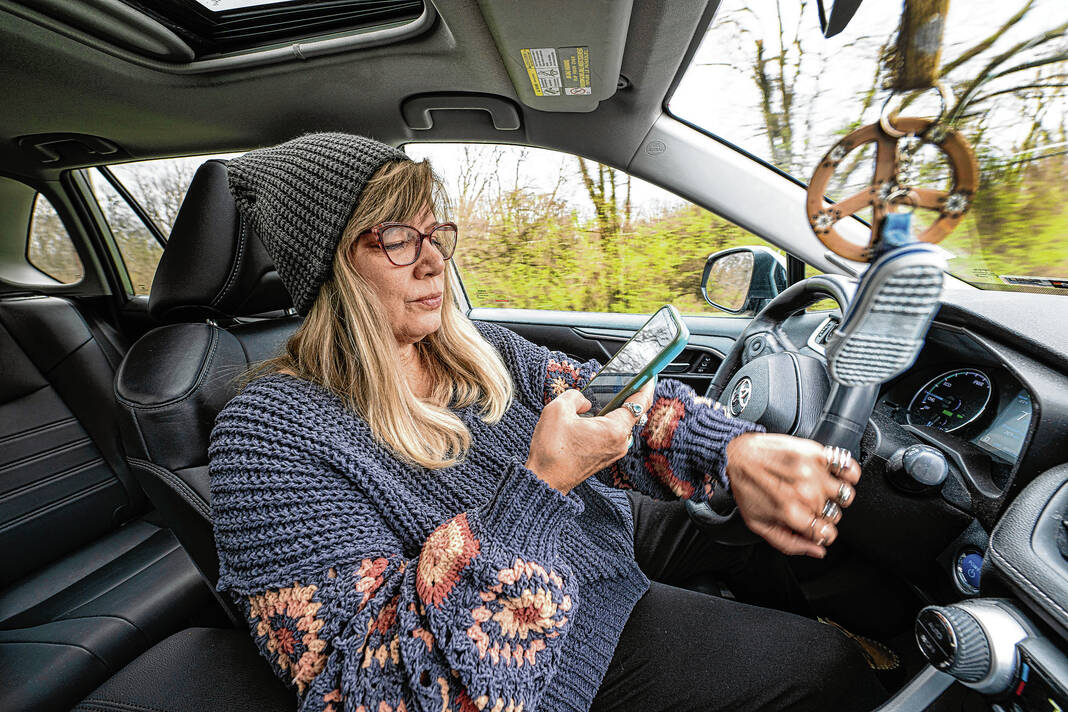HANCOCK COUNTY — Despite it being second nature for some as soon as they sit in their vehicle, seatbelt compliance numbers are down in the state and in Hancock County according to a county official.
Hancock County engineer Gary Pool said that the percentage of seat belt compliance in Hancock County has dropped from 93% to 88%.
“The police do a great job with it, but it can’t be all on them,” Pool said.
According to a study done by the Indiana University Public Policy Institute with data provided by the Indiana State Police, the median percentage of unrestrained injured vehicle passengers in 2022 was 25.3%. Hancock County sat right at the median percentage.
Another study that looked at overall collisions across the state showed there were 900 incidents that resulted in a fatality in 2022, an increase of 67 or 8% from 2021.

Pool said that the average driver will be in three to four car accidents in their life and has a 0.3% chance of fatality if they are buckled. That percentage jumps up to 3% if they are not buckled.
Pools compared the percentages to looking at two hypothetical rooms full of 100 people each – one room of those who use their seat belt and those who do not. Those who buckle up will most likely survive but three to four of those in the unbuckled room will not.
“Give yourself the edge and be in the right room,” said Pool, who noted that those numbers do not include individuals who will suffer severe injuries.
Late last year, Hancock County had a tragic car crash where a 17-year-old female died at the scene and the 18-year-old male driver was critically injured. Officials said that neither teen was wearing a seat belt.
Pool said that if the county team could get 20% of non-compliant seat belt users to finally click it, he believes they would be able to reduce the number of fatalities in the county by one each year on county roads.
Pool said that with driving season coming up and schools going on their spring and summer breaks, now is the time to push the message and importance of wearing a seat belt.
After looking at the demographics, Pool said they are targeting males from ages 16 to 21 – friends and family who are choosing not to or forgetting to buckle up. He said that while those in this age group are young and strong, they are “just as frail as anyone else when it comes to things six times faster, 30 times heavier, and not made of flesh and bone.”
Pool said that while Indiana already has laws such as Primary Enforcement and Laws Mandating Use, he wants to enhance enforcement, coordinating with law enforcement to help lower numbers and save lives.
In the United States, there are primary and secondary enforcement laws when it comes to seat belts. Indiana falls under primary enforcement, which means that officers can ticket a driver or passenger for not wearing a seat belt without any other traffic violations.
According to the Community Guide’s rules of evidence, available studies provide evidence that primary safety belt laws are more effective than secondary laws in increasing safety belt use and decreasing fatalities.
Alongside the importance of wearing a seat belt, Pool also said that they want to stress the importance of putting the phone down while driving.
According to the National Highway Traffic Safety Administration, distracted driving has become a leading cause of vehicle crashes in the United States, with much of the distraction attributed to texting while driving. In 2020, the state had 39 fatal crashes due to distracted driving.
A survey conducted by AAA Foundation for Traffic Safety in 2022 showed that 93% of drivers surveyed believed that texting or emailing while driving is “very or extremely dangerous.” Of those drivers, 37% admitted to using their phone while driving in the month prior and 27% admitted to typing while driving.
Pool said that distracting driving by use of phones targets the demographic of women aged 16 to 50, and that he too needs to refocus on not using the phone while driving.
In 2020, Indiana passed the Hands-Free Driving Law which states that holding a phone or other mobile device in hand while driving, except in an emergency, can result in a Class C infraction and subject the driver to a fine.
Pool said that, just like in the 90s when learning to buckle up while driving, driving hands-free needs to be focused on – having both eyes on the road and both hands on the wheel. Pool also says to make sure to take a second to double check at right lights and two-way stops that others are not distracting driving to prevent accidents.
“We all matter, and we have a great county. Let’s make sure we all live long and healthy to enjoy it,” Pool said.





